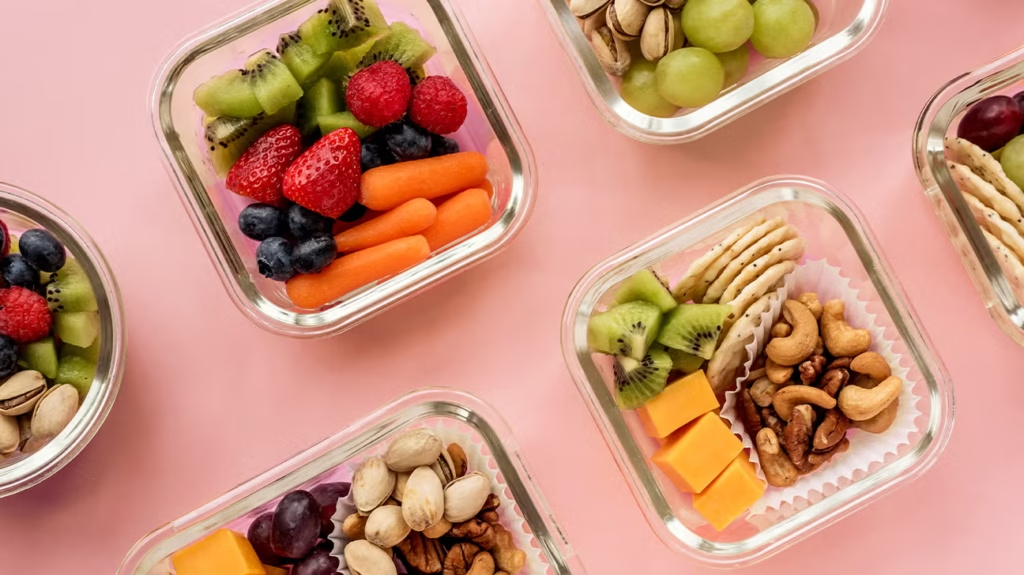
Whether you’re dashing through a terminal or exploring a new city, travel has a way of pulling us out of our routines, especially when it comes to food. Between time zone shifts, limited options, and the temptations of fast convenience, eating well on the go can feel like a challenge. But food is more than fuel; it shapes how we experience our journey. Choosing nourishing options during travel doesn’t just support physical health—it can also elevate your mood, increase energy, and even enhance your cultural encounters.
This guide explores how to make smarter food choices while navigating planes, trains, and unfamiliar streets. From planning meals before departure to staying hydrated and mindful while eating abroad, it offers practical strategies for maintaining balance without missing out on the flavors of adventure.
Choosing Nutritious Foods On The Go
Traveling often means spending long hours in airports, train stations, and on the road, where fast food and snack counters dominate. The sheer convenience of these options can entice even disciplined eaters to stray from their habits. Fortunately, with some know-how and a little planning, you can make choices that support your energy, mood, and health on the go. For travelers inspired by wellness-focused perspectives, such as Claudette Spinelli Schwartz, every snack and meal becomes an opportunity to take charge of their health, no matter where the itinerary leads.
Healthy picking begins with a scan of what’s available—aim for foods that are closest to their natural state. Fresh fruits, baby carrots, hard-boiled eggs, unsalted nuts, and low-fat yogurt are typically available at most transportation hubs. When edible choices seem limited, a glance at nutrition labels helps avoid traps like high added sugars or sodium. For instance, granola bars may look healthy, but they can pack more sugar than a candy bar. Instead, opt for fruit cups packed in juice (not syrup), whole grain wraps over white bread, or veggie snack packs instead of processed chips. These small, intentional choices add up over even the shortest layover.
Meal Planning Before You Depart
Preparation is your best friend when it comes to eating well on the road. Planning your meals and snacks before leaving can drastically reduce the urge to reach for unhealthy options during moments of fatigue or stress. Start by researching the food options available at your departure and arrival points, as well as along your route. Many airports, train stations, and even highways now provide healthier choices if you know where to look.
Create a packing list: include perishable snacks like pre-made salad jars, wraps, boiled eggs, or single-serve containers of hummus, which travel well in insulated lunch bags. For non-perishable alternatives, consider items such as unsweetened dried fruit, trail mix, whole-grain crackers, and jerky with minimal additives.
Hydration Tips For Every Destination
Hydration often takes a back seat in the hustle and bustle of travel, but its impact can be significant. Air travel, in particular, is notoriously dehydrating due to low humidity levels in the cabin. Travelers who experience fatigue or headaches soon after landing may be suffering from mild dehydration rather than jet lag or travel stress. A good rule of thumb is to drink water regularly—aim for a half-liter every couple of hours, especially if engaging in physical activity or traveling to warmer climates.
Carrying a reusable water bottle is a simple but powerful travel hack. Modern airports and public spaces are increasingly equipped with refill stations, making it feasible to replenish throughout your trip. Skip sugary sodas and energy drinks, which can actually make dehydration worse. If you’re concerned about water quality, consider bringing a portable filter or purchasing bottled water from trusted sources. Staying hydrated supports digestion, brain function, and overall mood, keeping you more comfortable and alert.
Eating Mindfully While Away From Home
Traveling to unfamiliar places often introduces new flavors and eating environments, making mindful eating even more essential. Mindfulness at the table is about more than what you eat—it’s about how you experience food. Savoring each bite, noticing textures and flavors, and paying attention to hunger signals can transform even a basic meal into a restorative break from a packed travel schedule.
Try to sit down for meals instead of eating while rushing to your gate or sightseeing. Take deep, slow breaths before eating to help switch from “stressed” to “rest-digest” mode. Chew slowly, and put down your utensils between bites. These practices help your body recognize when it’s full, making overeating less likely and supporting digestion even when eating foods your body isn’t used to.
Overcoming Common Food Challenges On The Road
Dietary restrictions, allergies, or personal preferences can complicate food choices when traveling, especially in unfamiliar countries or regions where you may not be familiar with the language. Downloading translation apps, printing allergy cards in the local language, and learning key words like “nuts,” “gluten,” or “vegetarian” can help keep you safe. Most accommodations and restaurants are willing to accommodate dietary needs if you communicate clearly and politely.
Even with the best-laid plans, there may be times your original intentions get away from you—perhaps an unexpected delay or irresistible local specialty throws off your usual routine. Instead of dwelling on it, focus on making your next food choice a nourishing one. Flexibility lets you enjoy your journey while maintaining your long-term wellness.
Best Practices For Eating Out When Traveling
Eating out is an exciting and often unavoidable part of exploring new destinations. While this opens the door to unique flavors, it also presents nutritional challenges. Take the time to check restaurant menus and reviews beforehand; many cities have digital resources that allow you to filter by dietary needs or calorie count. When you arrive, don’t hesitate to ask for customizations: you can request grilled instead of fried, steamed vegetables instead of fries, or sauces and dressings on the side.
How To Snack Smartly In Between Meals
Well-planned snacks are essential for curbing hunger and fueling adventures, especially when meal times are inconsistent. Steer clear of highly processed packaged snacks whenever possible and opt for protein-rich, fiber-filled options instead. Single-serve nut butter packets pair well with apples or whole-grain crackers; cheese sticks or air-popped popcorn travel easily and satisfy cravings with fewer calories.
Plan to snack every three to four hours to avoid dramatic energy dips, especially if you’ll be walking or sightseeing most of the day. Remember, food is part of the experience: sample local sweets and savories in moderation, pairing them with something wholesome to avoid rapid blood sugar spikes. Mindful snacking helps maintain stable energy and mood levels for all your adventures.
Creating Lasting Healthy Travel Habits
For regular travelers, developing sustainable nutrition habits can make healthy eating a natural part of their routine over time. Consider creating your travel meal checklist with go-to snack items for the car, plane, or train. Test different digital food-tracking apps that log nutrition and hydration for added convenience. According to NBC News, even small changes in daily eating habits while on the move can have a lasting impact on long-term health and well-being. Most importantly, prioritize flexibility and self-kindness along the way. Allow yourself to experience and enjoy the culinary world—after all, trying new foods is part of what makes travel rewarding. Each mindful decision while traveling supports a healthier lifestyle, wherever you may roam.

